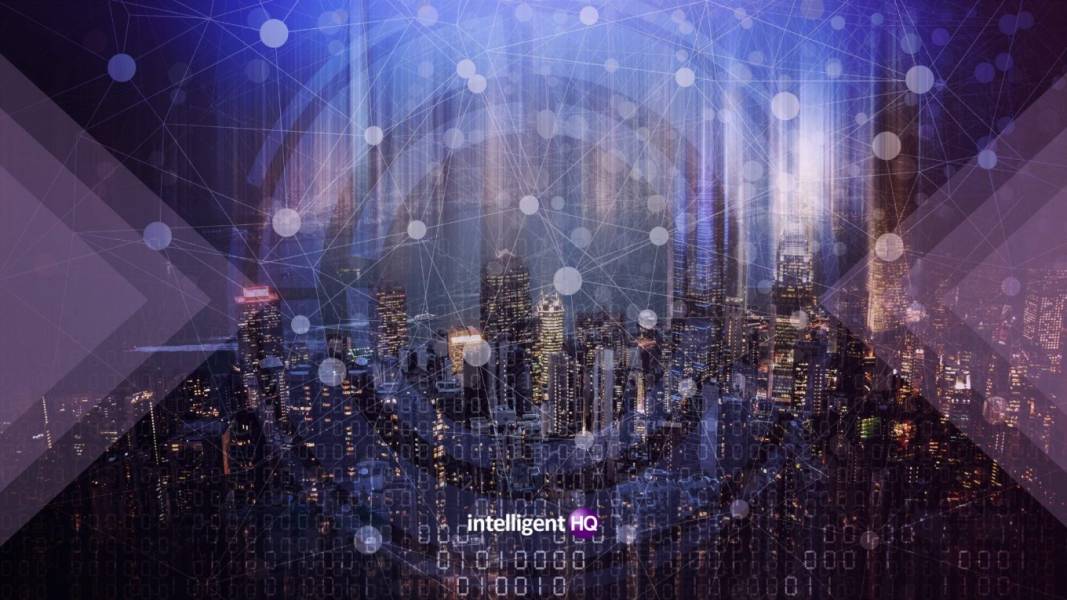The Internet of Things (IoT) is becoming a household name – and one that has found unique applicability in not only our homes, but in our businesses, workplaces, and cities. The number of installed IoT devices is expected to surge to around 30.9 billion units by 2025. The myriad of different forms of technology has the potential to provide incredible business value.

They are vital tools for digital transformation and datafication – and their power lies in performance improvements, as well as problem-solving capabilities. IoT’s importance as a technology trend this year and into the future is the role it plays in the successes of other technologies. For business owners looking to drive evolution, keeping a finger on the pulse of the latest IoT trends is important for agility into 2023 and beyond.
WHAT IS IoT?
Broadly speaking, IoT is the ecosystem of internet-connected smart devices and technologies in our homes, cities, and workplaces that continuously collect data.
IoT FACTS AND FIGURES IN 2022 AND BEYOND
• There are more than 7 billion connected IoT devices currently in operation.
• By 2030, 75% of all devices are expected to be IoT.
• Worldwide IoT spending is anticipated to reach $1 trillion and this growth rate is predicted to continue in 2023 and beyond.
WHY IS IoT IMPORTANT?
A Quick View of the Benefits of IoT in Business
• IoT solutions help to build resilient supply chains
• Improved health, wellbeing, safety, and security
• Optimised asset usage and maintenance
• Reduced overheads
• Improved communication and engagement
• Meaningful sustainability and environmental advances
TECHNOLOGY TRENDS: POWERED BY IoT
1. Remote Monitoring
According to McKinsey, the COVID-19 pandemic accelerated the adoption of digital technologies by seven years. Off the back of global lockdowns, this naturally includes the requirement for remote monitoring and the move towards automated systems. These IoT-based technologies are being adopted to transform everything from building monitoring and machine performance to building occupancy and machine learning.
2. Modular Smart Technologies Solutions
The preference for individual devices performing multiple functions has given way to networks of devices. This network of devices creates a modular system of individual utilities and processes. The result is a granular view of whole operations, which works toward holistic network benefits.
3. Data Analysis
Data is arguably one of the top strategic tools for businesses. High-quality data plays a role in designing business strategy (what can be monitored can be more effectively managed) and ensuring the integrity of supply chains. Through alerts around deviations from “normal” data sets, real-time action is also inspired, which can avert disaster and save costs.
Data also has the ability to inspire high-level compliance, machine learning, customer service, maintenance schedules, safety and security. Additionally, it gives invaluable insights for the purposes of gauging return on investment and preventing wastefulness.
4. Artificial Intelligence, Machine Learning, and Visual Inspection
The concepts of artificial intelligence, machine learning, visual inspections, and automation are becoming increasingly commonplace. These functions are all best guided by data insights – removing the unpredictability and margin of error from human processes.
5. Advanced Networks
As IoT technologies evolve, so too do the networks around them. Improved speed, security, and reliability of networks and connectivity infrastructure are the precursor to IoT sensors, wearables, smart cities and homes.
6. Smart Buildings, Smart Cities
IoT and smart technologies are being used to optimise various functions within the city environment. This is being done as a means of creating a more engaged public and improving everything from public transport systems to responsible and environmentally conscientious resource utilisation.
IoT technologies and smart technology solutions have also found their way into businesses, buildings, healthcare, retail, agriculture, and manufacturing. IoT technologies stand to have a bearing on many different facets of these different sectors. This includes vaccination cold chains, predictive maintenance for enhanced equipment management, transport and logistics. The applications are endless – and are easily tailored to the specifics of a project or long-term strategic objective.
7. Digital Twins
Digital twins are virtual replicas of a physical product, process, or system that bridge the physical and digital worlds. Today’s digital twins use sensors to collect real-time data about a physical item, which is used to create a virtual duplicate of the item. The digital duplicate can be optimised, manipulated and analysed to test different scenarios in a risk-free environment.
WHAT ARE THE CHALLENGES FOR IoT?
Security
According to Kaspersky research published in the first quarter of 2022, 43% of businesses have unprotected IoT infrastructure – and cybersecurity concerns remain a barrier to IoT systems implementation (as reported by 57% of surveyed businesses).
As IoT devices become more prevalent – and as our reliance on them increases – so security concerns take on renewed importance. Gartner reports that 20% of organisations have experienced cyber attacks on IoT devices over the past three years.
Chip Shortages
The supply of semiconductor chips for IoT solutions has been put under strain by the high demand in recent times, resulting in a chip shortage. This is expected to limit IoT growth by 10-15% in 2022. The good news is that public and private sector efforts by the European Union are designed to meet the challenges of the shortage and make way for achieved growth potential.
Latency
Traditionally, the optimal effectiveness and speed of data transmission of IoT technologies have hinged on bandwidth capabilities. Network advances will ensure not only that data is transmitted in real-time as required by many applications, but also that this process is done securely.
IoT SMART TECHNOLOGY SOLUTIONS
Smarter Technologies Group provides digital transformation and IoT technology solutions to private and public sector clients. These solutions are powered by OrionTM, The Real-Time Data Network, which is SIM-free, secure, and wireless with advantages around signal penetration and network coverage.
We believe in using technology to simplify a complex world. Our system of IoT sensors collects data in real-time, communicating this information to a remotely accessible, cloud-based dashboard. Alerts around deviations from predefined data parameters means you can react to undesirable changes to reduce cost and waste, streamline the customer and workplace experience, and to optimise efficiencies and profitability.

Pallavi Singal is the Vice President of Content at ztudium, where she leads innovative content strategies and oversees the development of high-impact editorial initiatives. With a strong background in digital media and a passion for storytelling, Pallavi plays a pivotal role in scaling the content operations for ztudium’s platforms, including Businessabc, Citiesabc, and IntelligentHQ, Wisdomia.ai, MStores, and many others. Her expertise spans content creation, SEO, and digital marketing, driving engagement and growth across multiple channels. Pallavi’s work is characterised by a keen insight into emerging trends in business, technologies like AI, blockchain, metaverse and others, and society, making her a trusted voice in the industry.












